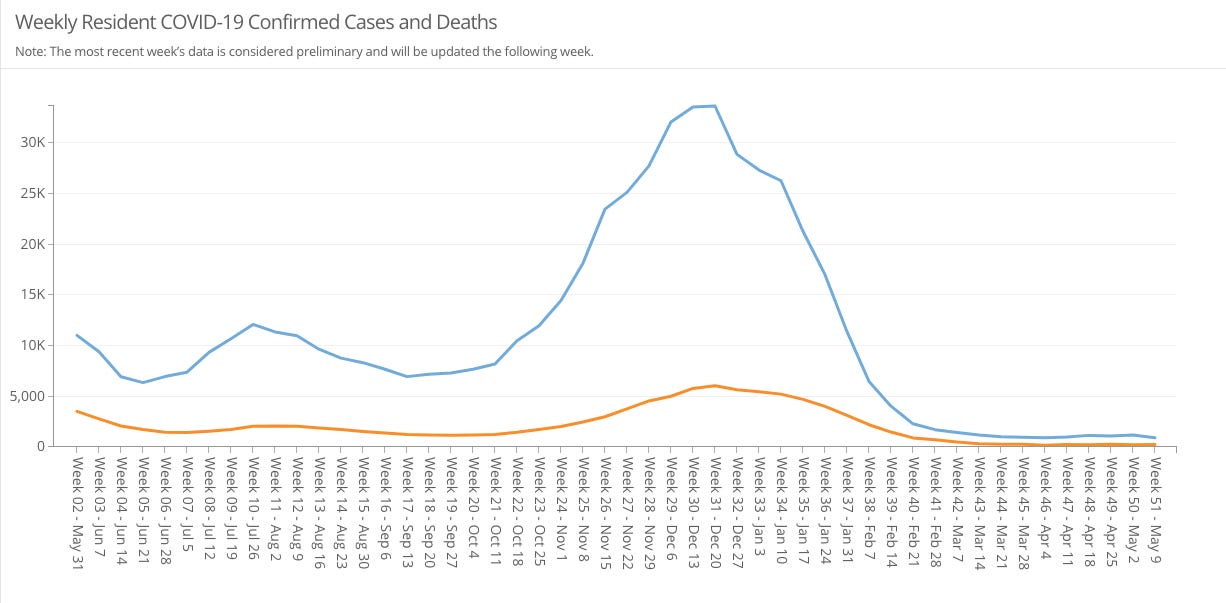The joy of vaccine selfies & air guitar
How public health experts overcame polio vaccine fears in the 1950s
In 1955 public health officials had a big problem.
The good news was, they finally had an effective vaccine for polio. And the timing couldn't have been better: polio cases had been spiking in the US, leaving thousands dead or impaired forever.
But there was a catch.
Why were people afraid of the polio vaccine in the 1950s?
The worst thing imaginable had happened: a lab screwed up and gave shots with *live polio* instead of a proper vaccine. Safety reforms were put in place after and luckily only a few died. But it became a major news story.
Vaccine conspiracies aren't new.
In the 1950s a delusional Florida man was arrested for spreading fake news designed to scare people away from the polio vaccine. (He said polio was caused by soda pop) Here's one of his lying flyers:
He certainly wasn’t the first anti-vaxxer. Here’s an editorial cartoon from decades earlier, mocking similarly ignorant sentiments from back in the early 1900s when some people were hesitant to get their smallpox vaccines:
Scientific American reported "immunization levels among US teens were at an abysmal 0.6 percent" in the 1950s.
Then Elvis went on the Ed Sullivan Show, played air guitar, and got vaccinated as part of a huge vaccination drive. Youth vaccination rate climbed to 80% in 6 months.
It wasn't just Elvis getting his shot in public that helped convince Americans to get over their polio vaccine skepticism in the 1950s & 60s. It was a large public information campaign that used all sorts of techniques to convince people to get vaccinated.
As you can see from these posters, messages ranged from sharing the good news about vaccines to sharing horror stories from people who didn’t get vaccinated.
These days, public health officials have found that negative stories about people who didn’t get vaccinated are quite compelling. In Israel, a country with a very high vaccination rate, they’ve recently found that deplatforming anti-vaxxers and sharing emotional stories of losing loved ones has had a huge impact on driving down hesitancy among highly religious populations.
The typical yearly flu vaccine is only 50% effective. The polio vaccine was about 90% effective.
But the Covid vaccines blow them both out of the water:
For instance, Pfizer's vaccine is 97% effective! And the other US-approved vaccines are similarly effective. Take a look at how nursing home Covid deaths have absolutely cratered now that 85% of US seniors are vaccinated:
Today responsible public figures are trying to emulate Elvis' famous public 1956 polio vaccination.
Bizarrely, Trump chose to get vaccinated in secret. This is particularly unfortunate since surveys show his supporters are among the most vaccine hesitant in the US.
We have a vaccine hesitancy problem today.
Although it's dropping, about 1 in 3 US adults are still reluctant to get vaccinated. That could prevent us from reaching herd immunity–allowing the virus to mutate which threatens us all.
Experts say: "Surveys consistently show that around 1 in 3 unvaccinated people are waiting for others around them to get vaccinated first before they do so. Sharing vaccination stories, then, could give people the push they need."
Anyway, don't mock vaccine selfies. They're good! And sharing positive vaccination stories is something we all can do, no matter where we live or what our local government is doing to promote the effort.
Prof Robert Cialdini coined the term "social proof" to explain how we influence others by example.
You don't need to be Elvis to bust out an air guitar and help people get over their vaccine fears. Spread the love!
That’s all the history I’ve got for you today. Be well.
Until next month– your friend in history,
Arlen
P.S. - If you learned something new or found this newsletter interesting, please share it on Twitter/Facebook, or forward it!















